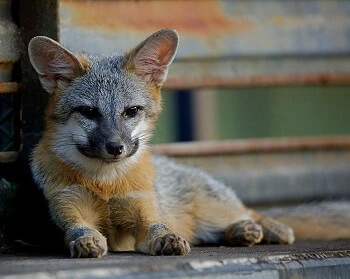If you are looking for the cutest pet animals other than cats and dogs, then baby foxes, are just as lovable. But you need to know the interesting baby foxes’ names just like cats and dogs pets’ names. Therefore, we bring this article which covers baby foxes’ facts including their names.
“The fox with babies brought a glimmer of hope in a gloomy world, serving as a symbol of the wonder and magnificence of existence”
(Harry Potter)
What are Baby Foxes?
Baby foxes are the young of the fox species and are typically born in litters of four to six, kits are blind and deaf creatures.
Most newborn foxes have fur that is tan, brown, or gray and black. They resemble their parents very little and are incredibly fluffy. A few months later, their fur becomes visible.
What are Baby Foxes Called?
“Kits” and “Cubs” are the widely embraced terms for adorable baby foxes around the world. Moreover, these fascinating creatures are also known with several endearing names such as Pups, Foxlings, Foxlet, Foxkin, Kitsune and Vulpini. It is worth noting that “kit” is mainly used for foxes, while “pups” and “cub” are also affectionately used for babies of other animals too such as cats, dogs.
The word kits is used for fox baby form it’s birth to few years. When they grow up another name is used for the same animal.
Let’s dive into the world of fox babies, and learn about the fascinating names of baby foxes and the characteristics of fox kits.
| Kits | Cubs |
| “Kits” is the endearing term used for fox babies during their early stage of life. | The term “Cubs” symbolizes the progression of baby foxes as they grow slightly older and become more playful and active. |
The Scientific Name for Baby Foxes:
Every species of baby fox is uniquely distinguished by its scientific name. In the case of the adorable red fox cub, its scientific name is “Vulpes” which is derived from the Latin language.

Common Names for Baby Foxes:
There is an exciting array of unique terms used for baby boxes worldwide. the widely recognized names are:
- Kits: “Kits,” “pups,” and “cubs” are interchangeable terms that lovingly refer to the adorable baby foxes. Furthermore, it’s fascinating to note that “kits” is also a charming abbreviation of “kitten,” typically used to describe young cats.
- Pups: Baby foxes or fox pups is usually called to the young fox who are still depends on their mother. Pups is also used for the babies of dogs have weigh around 3-4 ounces.
- Cubs: The name cubs can also be used for the baby bears, lion and tiger. Cubs is usually used for flesh eating mammls, they maybe lion, fox and bear.
- Foxlings: This is a less common name for fox babies, but it is still used occasionally.
- Vulpini: It is a less used “Latin term” that refers to young foxes. Vulpini is the diminutive form of “vulpes” which means fox.
- Foxlet: This is another name for baby foxes that is not commonly used. Foxlet refers to the young, small or immature of the fox species.
- Foxkin: This is also a less used name for fox babies.
- Kitsune (in Japanese culture): This name is mostly used in Japanese culture for baby foxes. kitsune are the fox tricksters of traditional Japanese mythology. They belong to the category of supernatural beings known as ykai, which are frequently compared to the English zombie or demon.
- Redpups: Redpups refers to the young of the fox species, and it emphasizes the rusty red color of their fur.
- Foxpaws: This is another name for baby foxes, like Redpups it is also not commonly used. Foxpaws refers to the young of the fox species, and it emphasizes the small size and delicate paws of these creatures.

Interesting Facts about Baby Foxes:
- They start their lives with a tender reliance on their nurturing mothers. Initially they depend on their caregivers for sight, hearing, and mobility, embarking on an extraordinary journey of growth. In just a couple of weeks, a mere nine days after their arrival, their senses blossom, and their inquisitive eyes open to the world.
- They are born with hairless dark grey skin. Moreover, around two weeks after birth, they begin to sprout fluffy black fur; as this fur moults, a thick coat replaces it. Additionally, around 8 weeks old, they begin to resemble foxes with larger snouts and pointy ears.
- Foxes pups are born without teeth in addition to their senses. A few weeks after birth, their milk teeth—first permanent teeth—emerge.
- These Creatures start looking for food on their own after approximately twelve (12) weeks of their birth.
A fox cub is as cute as a button.” This saying refers to the adorable appearance of baby foxes, often compared to the small, round shape of a button.
Foxes with Babies Use in Literature:
- “The baby foxes were like little bundles of energy, their antics making me laugh and smile.” (Peter Pan)
- “The baby foxes were like small, wild creatures, their eyes gleaming with mischief and wonder.” (The Jungle Book)
- “The baby foxes were a reminder of the beauty and wonder of nature, their presence a gift from the GOD.” (Greek mythology)
- “It made me realize how wonderful and mysterious the world can be, and how there’s magic all around us. Seeing those baby foxes was a great reminder of that.” (Lord of the Rings)
Physical Characteristics of Baby Foxes:
Foxes’ kits or cubs, have several physical characteristics that distinguish them from adult foxes.
Size: Fox cubs weigh about 100g, and they are smaller in size,
Color: They have dark grey fur, and arrive in the world blind and deaf. In the first two weeks, as their blue eyes and ears open, this turns into a dark brown color. Their amber eyes begin to change color at one month of age, and their red fur begins to show through on their face.
Physical appearance: Foxes kits have short, stubby tails, and their paws are proportionately larger than those of an adult fox. Additionally, they have a playful and curious nature and have large eyes compared to their head.
Markings: Foxes babies often have distinctive markings that help to distinguish them from adult foxes. The most common markings found on these include:
White or cream-colored fur on the tips of their tails, which gives the appearance of a “white-tipped tail”
Dark spots or speckling on their fur, which may fade as they grow older
A dark mask around the eyes, which is a characteristic feature of many fox species. These markings can vary depending on the species of fox.
Habitat and Distribution of Foxes Kits or Cubs:
Some of the most common habitats for foxes cubs include:
- Grasslands and prairies
- Deserts
- Forests
- Mountains
- Arctic tundra
Natural Habitats:
Baby kits or cubs, have certain natural habits that are unique to their species and developmental stage. Some of the most notable natural habits of fox babies include: Living in dens or burrows, growing, playing, learning and exploring.
Behavior and Diet of Fox’s Babies:
Deaf and blind baby foxes, from birth to next few days of their life completely rely on their mother for survival.
As they grow, they begin to explore their surroundings and start to eat solid food, such as insects, worms, and small mammals, in addition to nursing. They start hunding relatively larger animals with the growth and development of their body.
How many Babies do Foxes Have?
The number of babies that a fox has can vary depending on the species and the specific individual. In general, most foxes have litters of 2 to 12 kits, although some species may have smaller or larger litters.
For example, red foxes typically have litters of 4 to 6 kits, although litters of up to 12 kits have been reported. Arctic foxes usually have litters of 6 to 8 kits. The Gray fox usually have litters of 2 to 6 kits. The timing of breeding also varies among species and location.
Some up Thoughts:
In conclusion of this article, it is clear that baby foxes have several names depending upon their age and type. The most common names for fox babies are Kits, Pups, Cubs, Foxlings, Vulpini, Foxlet, Foxkin, Kitsune, and Redpups.
However, kits and cubs are the most popular of these names used in most of the regions. Additionally, giving names to them is not just a fun and entertaining exercise, but it also serves a vital purpose in preserving and understanding these fascinating animals.

